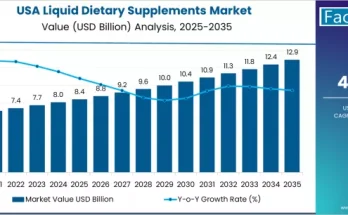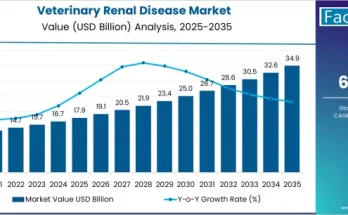As diabetes continues to pose a significant global health challenge, the demand for advanced, user-friendly, and reliable insulin delivery systems has never been more pressing. Insulin pumps have emerged as a game-changing solution, offering enhanced glycemic control, greater lifestyle flexibility, and improved patient compliance compared to traditional insulin delivery methods. Over the next decade, the insulin pumps market is poised for substantial growth, driven by technological innovation, rising diabetes prevalence, and increasing awareness of the benefits of continuous subcutaneous insulin infusion therapy.
The insulin pumps market is undergoing a transformative shift, marked by the integration of smart technologies, patient-centric design improvements, and an expanding healthcare infrastructure in both developed and emerging economies. As regulatory environments evolve and research into next-generation devices intensifies, the future of insulin delivery is becoming more automated, intelligent, and responsive to individual patient needs.
Market Overview
Insulin pumps are medical devices designed to deliver insulin continuously to individuals with diabetes, primarily those with type 1 diabetes, though adoption among type 2 diabetics is also rising. These devices mimic the body’s natural insulin release more closely than traditional injection methods. By delivering insulin in programmable doses through a catheter placed under the skin, insulin pumps support precise and adjustable glycemic control, helping reduce the risk of complications associated with uncontrolled blood sugar levels.
The market encompasses a range of products including tethered pumps, patch pumps, and hybrid closed-loop systems. Innovations in software integration, wireless connectivity, and compatibility with continuous glucose monitoring (CGM) systems are redefining the value proposition of insulin pumps. Stakeholders, including manufacturers, healthcare providers, and policymakers, are recognizing the vital role of insulin pumps in long-term diabetes management and patient empowerment.
Regional Insights
North America
North America remains at the forefront of insulin pump adoption, fueled by robust healthcare infrastructure, favorable reimbursement policies, and a high prevalence of diabetes. The region’s commitment to technological innovation has led to early adoption of advanced devices, including integrated insulin pump-CGM systems and artificial pancreas solutions. The presence of leading medical device companies and proactive regulatory support further bolsters the market landscape.
Europe
Europe follows closely, with countries such as Germany, the UK, and the Netherlands showing strong demand for automated insulin delivery systems. The region benefits from structured diabetes care programs, widespread awareness campaigns, and the availability of trained endocrinologists. Regulatory efforts focused on improving patient outcomes and reducing diabetes-related healthcare costs are driving public and private investment in insulin pump technologies.
Asia-Pacific
Asia-Pacific is emerging as a dynamic growth hub for insulin pumps, driven by increasing diabetes incidence, rising healthcare spending, and improving diagnostic capabilities. Urbanization, changing lifestyles, and greater health consciousness are contributing to a heightened demand for advanced diabetes management tools. Governments in the region are investing in healthcare reforms and digital health initiatives, which are expected to create favorable conditions for insulin pump penetration.
Latin America and Middle East & Africa
While these regions currently represent smaller shares of the global market, there is growing potential for expansion. Efforts to modernize healthcare systems, coupled with support from international health organizations, are paving the way for improved diabetes care access. Education campaigns and partnerships with local healthcare providers are expected to increase the acceptance of insulin pump therapy in these markets.
Key Trends & Forecast
Shift Towards Smart and Connected Devices
One of the most significant trends in the insulin pumps market is the transition toward smart pumps equipped with wireless connectivity and app-based interfaces. These devices allow users and healthcare providers to monitor and adjust insulin delivery in real-time, enhancing therapeutic precision and patient engagement. Integration with CGM systems is making hybrid closed-loop systems a viable reality, pushing the market towards fully automated insulin delivery.
Rise of Patch Pumps and Tubeless Designs
Patient comfort and discretion are key drivers behind the development of tubeless and patch pumps. These compact, wearable devices offer a more discreet insulin delivery method and minimize the risk of tubing-related complications. With increasing demand for user-friendly and less invasive devices, manufacturers are focusing on miniaturization and ergonomic design enhancements.
Emphasis on Personalization and AI Integration
Artificial intelligence is playing an increasing role in personalizing diabetes care. AI-powered insulin pumps can analyze data from glucose sensors, physical activity trackers, and meal logs to predict insulin requirements and adjust doses accordingly. This level of personalization not only improves glycemic control but also reduces the cognitive burden on users, particularly children and elderly patients.
Expansion of Reimbursement and Coverage Policies
Wider insurance coverage and supportive reimbursement frameworks are encouraging more individuals to opt for insulin pumps. Governments and private insurers are recognizing the long-term cost-saving potential of improved diabetes management through advanced delivery systems. As evidence of clinical efficacy grows, payers are expanding their lists of reimbursable devices and services.
Increasing Focus on Pediatric and Geriatric Populations
Tailored solutions for pediatric and geriatric populations are gaining traction. Children require pumps that are easy to use, secure, and capable of accommodating rapid physiological changes, while elderly patients often seek devices that are simple, reliable, and accessible. Manufacturers are designing specialized models and educational programs to cater to these demographics more effectively.
Applications & End-Use Outlook
Hospitals and Clinics
Healthcare institutions are key end users of insulin pumps, particularly during diabetes diagnosis and treatment initiation. Hospitals play a crucial role in educating patients on proper usage and ensuring safe device calibration. The presence of certified diabetes educators within clinical settings supports wider adoption and improved patient outcomes.
Homecare Settings
With the growing preference for at-home healthcare management, the homecare segment is experiencing robust growth. Portable and easy-to-use insulin pumps enable individuals to manage their condition with minimal disruption to daily routines. Remote monitoring tools and telemedicine integrations further strengthen the role of insulin pumps in home-based care.
Ambulatory Surgical Centers (ASCs)
ASCs are increasingly adopting insulin pump technologies for managing perioperative glucose levels in diabetic patients undergoing surgery. These centers benefit from compact and responsive insulin delivery systems that can be adjusted quickly and efficiently in outpatient environments.
Research and Academic Institutions
Universities and research centers are exploring new frontiers in insulin pump development, including biocompatible materials, predictive algorithms, and next-generation energy sources. Collaborations between academic institutions and industry players are yielding innovations that could redefine the capabilities of insulin pumps in the coming years.
Challenges and Opportunities
Despite the promising outlook, the insulin pumps market faces several challenges. High upfront costs, limited awareness in low-income regions, and concerns over device malfunction or misuse can hinder adoption. Additionally, navigating complex regulatory pathways remains a hurdle for manufacturers seeking to introduce novel technologies.
However, these challenges are also creating opportunities. Partnerships with non-governmental organizations and digital health startups are helping bridge the accessibility gap. Moreover, advancements in materials science, cybersecurity, and power efficiency are setting the stage for the next generation of insulin delivery systems. With strategic investments and cross-sector collaboration, the market is well-positioned to overcome barriers and expand its reach globally.
Conclusion
The insulin pumps market represents a critical frontier in the ongoing effort to enhance diabetes care and improve quality of life for millions of individuals. As technology evolves and global healthcare priorities shift toward prevention and chronic disease management, insulin pumps are becoming an essential component of comprehensive diabetes therapy.
From smart connectivity and AI-powered personalization to user-centric design and supportive policy frameworks, the landscape is rich with innovation and potential. Stakeholders across the healthcare ecosystem—including manufacturers, providers, regulators, and patients—must work collaboratively to ensure that insulin pump technologies are accessible, reliable, and responsive to the diverse needs of the diabetic population.
By embracing these advancements and addressing remaining challenges, the insulin pumps market can lead the charge toward more effective, efficient, and empowering diabetes management in the decade ahead.



